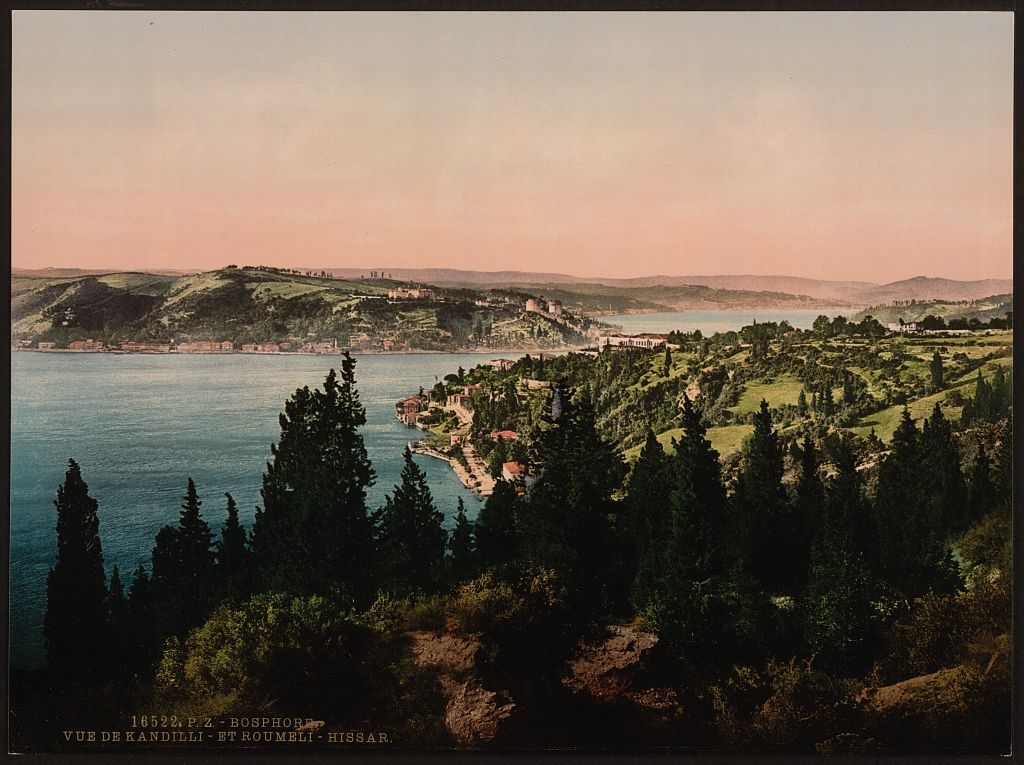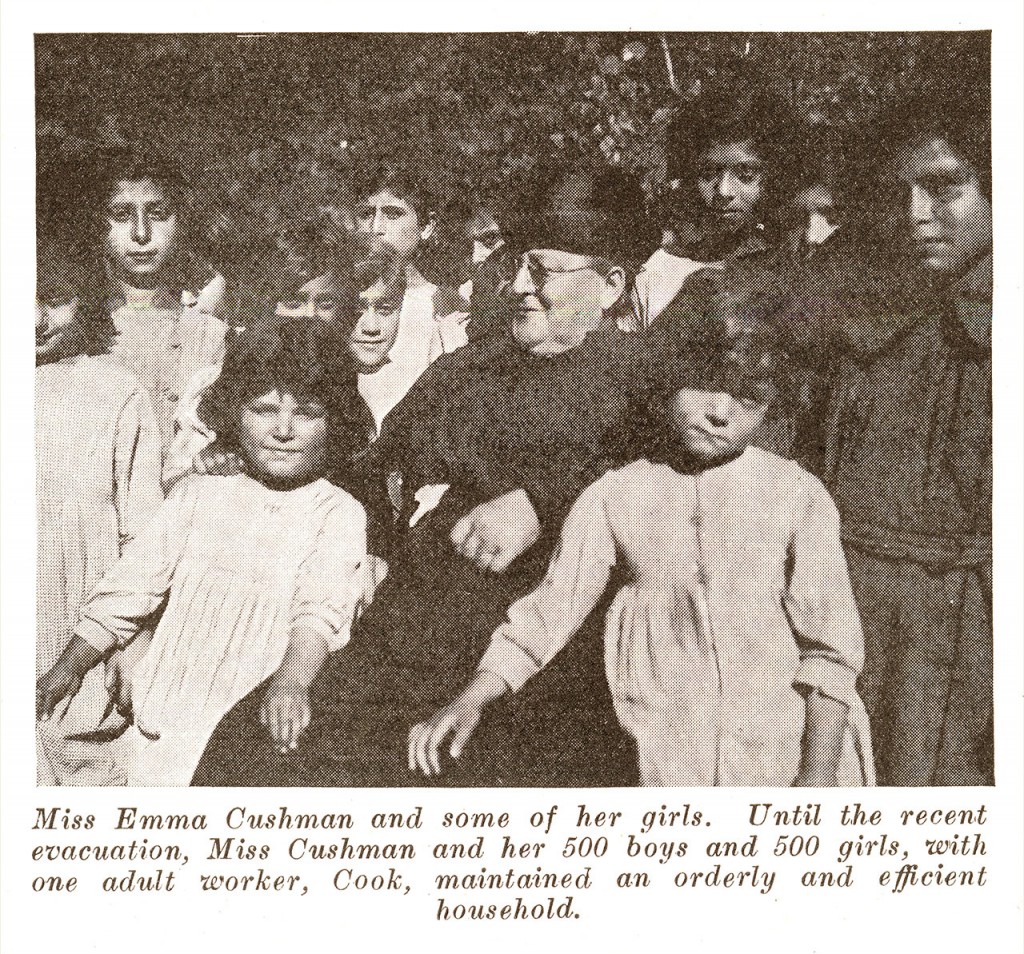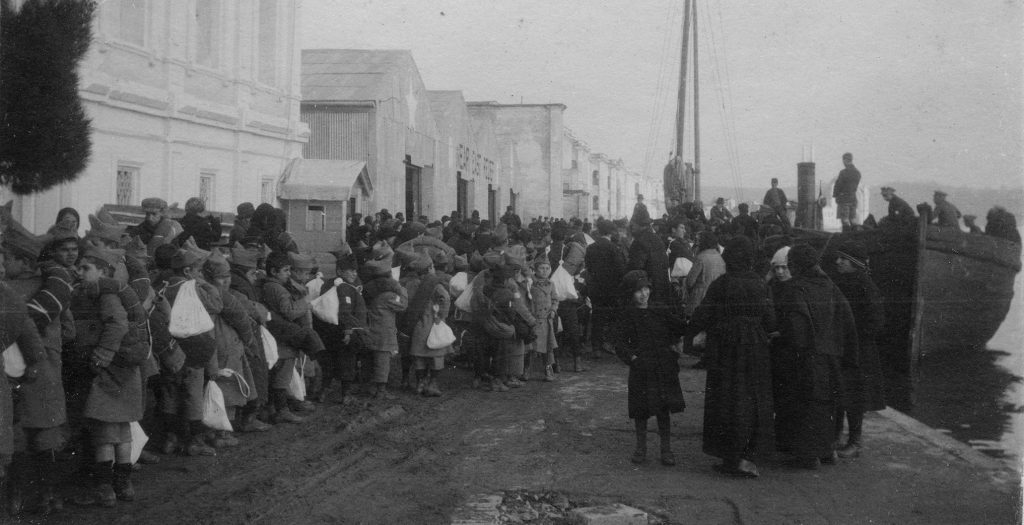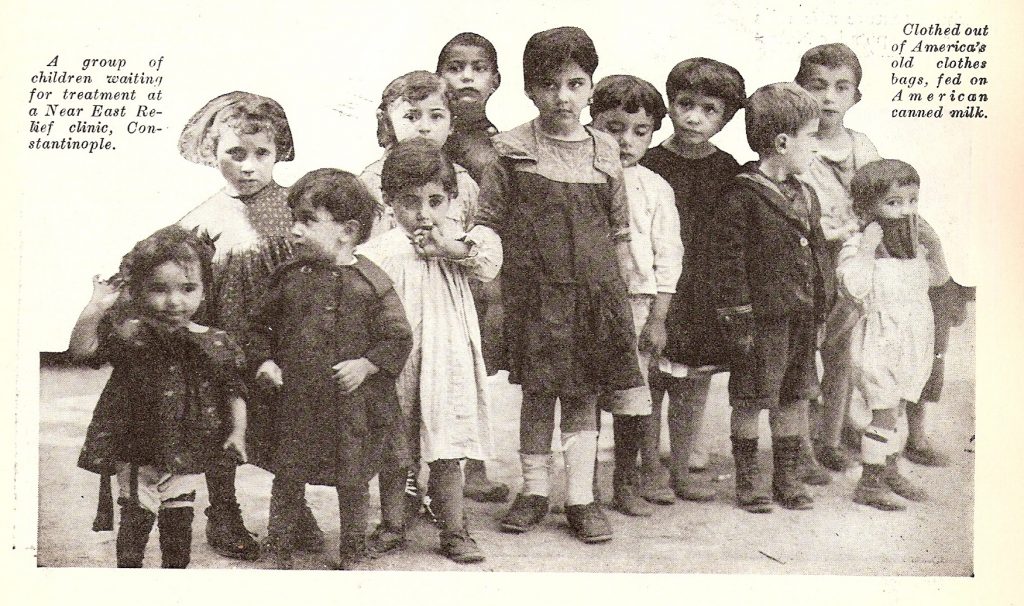Constantinople, Part 4: Saving the Children
This is the fourth in a series of Dispatches on Near East Relief’s work in Constantinople. Be sure to read our three prior Dispatches on Constantinople. Don’t miss the interactive map at the bottom of this Dispatch!
Research Note: The records of Near East Relief’s orphanage work in Constantinople can be confusing. The primary source material often lacks specific information, like addresses and names. This Dispatch uses the place names from the early 1920s. When applicable, the modern name is in parentheses.

10,000 ORPHANS GREET YOU
Constantinople, Summer 1922. A group of well-dressed American tourists disembarks from a luxurious cruise ship. Constantinople is a feast for the senses. While walking down the gangway, the tourists take in the sights of the Queen of Cities. Luxurious Ottoman palaces flank the Bosphorus. The Byzantine spires of Hagia Sophia touch the blue sky. Across the water, the Selimieh barracks loom in the distance — its 9,000 refugee inhabitants invisible to the casual eye.
The tourists set foot upon the shore, and the greeting is cacophonous. An enormous crowd of uniformed children cheers for the tourists’ arrival. They wave American flags. There is a burst of joyful music, and the children launch into an American song to entertain their visitors. These are just a few of the 10,000 orphans living in Constantinople. They are living reminders of the importance of Near East Relief’s work.

A TENTATIVE PEACE
In a time of devastating violence, the orphans of the Near East needed food, clothing, shelter, medical care, and education. Nowhere was this more evident than in the teeming, diverse city of Constantinople. While Near East Relief stretched its resources to care for adult refugees and families, the organization’s primary focus was the protection of these vulnerable children.
Constantinople enjoyed a brief period of tentative peace after the Armistice. The city was occupied by the Allied forces. The Allies had taken control of many large buildings, ranging from palaces to schools. The Allies allowed Near East Relief to use some of these buildings as orphanages and hospitals. By 1921, Near East Relief was operating several orphanages in Constantinople. The organization also provided supplies, administrative support, and financial assistance to existing orphanages that had taken in additional children.

JEWISH ORPHANAGES
Near East Relief worked with Constantinople’s established Jewish community to support two orphanages. The orphanage at Ortakeuy (now Ortaköy) was home to 210 Jewish girls who received half-support from Near East Relief. One Ortakeuy orphan named Esther Razon (later Alice Duryea) would find international fame when she starred in the Near East Relief film Alice in Hungerland. The film included live footage of several Near East Relief orphanages in Constantinople. Near East Relief managed and partly funded the Jewish orphanage at Haskeuy (now Hasköy), which housed 100 children. The diverse neighborhood of Haskeuy, which means “fine village,” was home to the long-standing Kalfyan Orphanage.
Haskeuy also hosted a specialized Near East Relief trachoma orphanage that housed 133 young female patients. The image at left was identified as the Haskeuy Orphanage in the July 1922 issue of the New Near East magazine. It is unclear whether this is the Jewish orphanage or the trachoma orphanage. An additional 500 Jewish orphans lived with foster families in Constantinople.

Near East Relief supported four Greek orphanages, including the Greek National Home for Boys on the island of Prinkipo. Public domain image.
GREEK ORPHANAGES
Near East Relief collaborated with the Greek Central Committee of Constantinople to support four important orphanages. Two of the orphanages were located in the Princes’ Islands (now part of Istanbul’s Adalar district). The National Greek Home for Girls on the island of Halki (now Heybeliada) was housed at the large Greek Orthodox theological seminary. The 305 girls living at Halki benefited from the sea air and beautiful surroundings. They also had the rare luxury of attending classes in a building that was actually designed to serve as a school. The Halki orphanage was known for its excellent dressmaking department.
Seven hundred thirty-three boys called the Greek National Home for Boys on the island of Prinkipo (now Büyükada) home in 1922. The orphanage was operated by the Greek Central Committee and the Ecumenical Patriarchate of Constantinople, with financial support from Near East Relief. The boys of Prinkipo trained in carpentry, tailoring, and shoemaking. Although the setting was beautiful, the orphanage suffered from a lack of sufficient fresh water. The threat of trachoma and other contagious disease was constant.
There was a smaller Greek orphanage in Ayaz Pasha (now Ayaspaşa), in the European district of Pera (now Beyoğlu). Although they lived within the city of Constantinople, the 210 girls at Ayaz Pasha were isolated for health reasons: they suffered from trachoma. Near East Relief also supported the National Greek Home for Children in Pendik, on the Asian side of the Bosphorus. At the time, Pendik was a very rural area. The orphanage housed 190 boys and 110 girls. They enjoyed sea bathing and playing in a nearby pine grove.

View of the Bosphorus from Kooleli, c. 1890. Photochrom print, Library of Congress.
ARMENIAN ORPHANAGES
Near East Relief was involved in at least 11 of the Armenian orphanages in Constantinople in 1921. Near East Relief often collaborated with the local Armenian Central Committee (ACC). The youngest orphans were housed in two Kindergarten Orphanages: 155 children in Beshiktash (now Beşiktaş), and 70 in Khouroutchesme (now Kuruçeşme). The former was an excellent building with plenty of outdoor space for play. The latter was hindered by a lack of water, which could only be obtained from a public fountain one block away.
Near East Relief worked with the ACC to run five orphanages for older children. The orphanage at Balat housed 100 Armenian girls in the Constantinople’s traditional Jewish quarter. Ortakeuy (now Ortaköy) was home to 170 Armenian girls who were studying to become teachers. The Scutari Orphanage (now Üsküdar), located in the same district as the Selimieh barracks, housed 105 girls. An additional 100 girls lived in Koum Kapou (now Kumkapi). The largest of these orphanages was located in a beautiful palace in Kadikeuy (now Kadıköy). The 250 girls at Kadikeuy enjoyed a particularly good educational program, which included music and drawing. Haskeuy was home to the aforementioned trachoma orphanage.

The largest orphanage of all was located in the former Ottoman military academy at Kooleli (now Kuleli). The large complex was home to 1,000 boys. Near East Relief obtained the school from the British government. Kooleli was unique in that it had an enormous staff. The Kooleli Orphanage boasted 29 teachers, a dedicated recreation director, a priest, and a doctor.
The boys enjoyed two recreation halls and swimming facilities. The boys of Kooleli also took it upon themselves to form a library and literary society; what they lacked in books they made up for in enthusiasm. There was also a dedicated trachoma hospital with 60 girls and 270 boys at Kooleli.
Near East Relief worker Emma Cushman supervised a large orphanage at Boyadjikeuy (now Boyacıköy). The neighborhood is home to an Armenian church that dates back to 1885; the cemetery goes back to the 1820s.
Right: View of Kooleli Military School, c. 1890. Library of Congress.

In 1922, Near East Relief acquired a large property in Yenikeuy (now Yeniköy). Near East Relief rented this former palace, or yali, in late 1922 in an effort to consolidate orphanage operations. The building was once the home of Prince Burhanettin, son of the Ottoman Sultan Abdul Hamid. Miss Emma Cushman was also in charge of this orphanage, which housed 1,000 orphans. The location was thought to be especially healthy: the children could play in the rose gardens and swim in the Bosphorus.
Near East Relief opened a tubercular hospital at Yedi Kule (now Yedikule) in 1920. About 330 boys and girls received treatment at this specialized orphanage. The orphanage at Beylerbey was an industrial school for Armenian boys. This orphanage was originally located in Pera. The 247 boys produced all of the shoes for Near East Relief orphans in Constantinople.

Near East Relief workers evacuating orphans from Constantinople in the wake of the Smyrna Disaster, c.1922. The building with the peaked roof is a Near East Relief warehouse.
FROM CONSTANTINOPLE TO GREECE
Near East Relief brokered an agreement with the Turkish Nationalist government in 1921 allowing the organization to continue operating in Turkey. The agreement was tenuous at best, given that the United States did not have a diplomatic relationship with the new government. After the withdrawal of the French troops from Cilicia and the burning of Smyrna, it quickly became clear that the Turkish interior was no longer safe for orphans or refugee workers.
Near East Relief transported an additional 15,000 orphans to Constantinople. They came from stations deep in the interior of Anatolia, such as Caesarea, Konia, Sivas, and Samsoun. They traveled by water, by donkey, and on foot.
These orphans found temporary homes in the crowded orphanages of Constantinople. The Greek government heroically offered 13 sites to be used as orphanages. Near East Relief began the vast undertaking of transporting 17,000 orphans across the Aegean Sea. Soon there were Near East Relief orphanages all over Greece, from Corfu, to Corinth, to Athens. Although Near East Relief maintained a presence in Constantinople for several more years (and was instrumental in the population exchange), most of the Constantinople staff moved overseas with the organization’s young charges.
Learn More On Our Interactive Map!
Explore the map here, or click here for the larger Google Maps version.
Support the Near East Relief Historical Society!
Research like this is challenging and rewarding, and NERHS loves sharing these discoveries with you. But we cannot do it alone. Please make a gift to the Near East Foundation in support of NERHS’ historical initiatives! You can even make a gift in honor of a loved one.
Your donation allows us to research this important history, add materials to the Digital Museum archive, and share Dispatches like this with you.

Children awaiting treatment at a Near East Relief eye clinic. The New Near East magazine, Oct. 1922.
